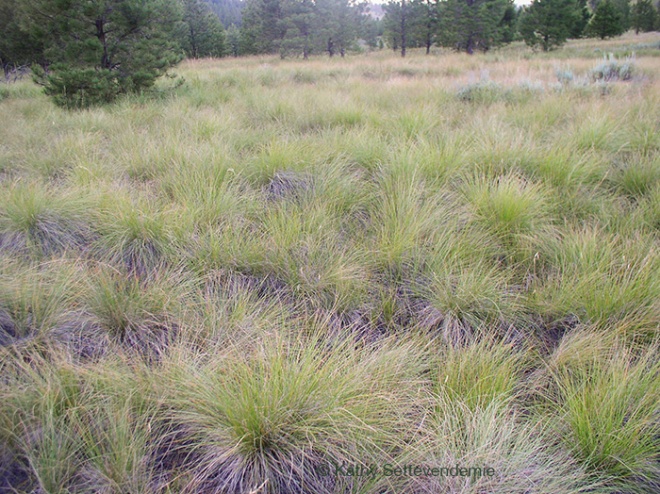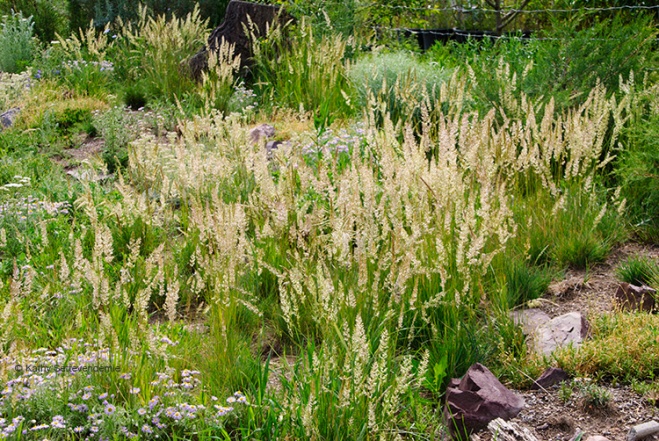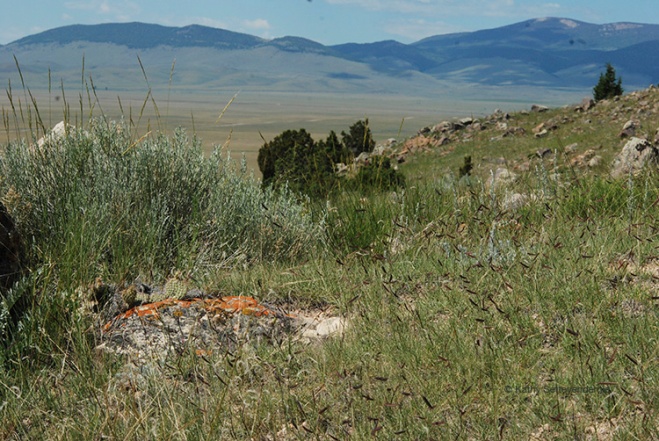In the pasts few years there has been a surge in the number of landowners removing weeds from their property and striving to restore their land to a healthy plant ecosystem. In spite of the best intentions, home owners sometimes end up with disappointing results, especially when relying on landscape professionals that are are familiar with non-native species but often lack knowledge of native species. This post may help.
First, when planning to restore your grassland determine your goal for the land – pasture or grazing land, native habitat or something else. Native grasses are not particularly adapted for grazing and non-native species may be more productive.
Next conduct a site analysis to determine growing conditions and identify species present prior to selecting species for revegetation.
An analysis of a site includes identification of:
- sun
- aspect
- wind
- soil type
- water availability for establishment
- elevation.
Once these are known, consider which grass species fit your site in terms of:
- sun tolerance
- wind tolerance
- soil preference
- water needs
- temperature requirements
- height
- growing habit
- aggressiveness
- reseeding habits
- root systems
- drought tolerance
‘Right plant, right place’ is still on of the best mottos to use when considering how to restore a grassland. Selecting plants that are commonly used in restoration projects may or may not meet your goals for your site.
Cultivars
Many seed companies sell cultivars. Cultivars are plant varieties produced by selective breeding or genetic modification for a particular desirable characteristic that is maintained through propagation. These may or may not look like the plants you see naturally occurring around you. My preference is not to use cultivars unless I cannot obtain unmodified native seed.
Cultivars are usually notated in a set of single quotation marks after the botanical name. For examples Festuca idahoensis ‘Siskiyou blue’.
While there are many native grass species in Montana, not all are available commercially.
Grassland communities vary across ecosystems. Selecting species that are part of plant community similar to yours ensures both a natural look and a successful balance of species (where no one species outcompetes another.)
Taking time to identify the grasses in your area is well worth doing if you want your grassland to look natural! You may be surprised at how many species there are in a small area. Planting a variety of species will fill in root niches, allow a succession of bloom times, and create a natural look.
Native grasses found in Montana: (note: botanical names are essential!)
Achnatherum hymenoides – indian ricegrass (syn. Oryzopsis hymenoides)
Achnatherum nelsonii – Columbia needlegrass
Achnatherum occidentalis – western needlegrass (syn. stipa occidentalis)
Achnatherum richardsonii – Richardson’s needlegrass (syn. Stipa richardsonii)
Aristida purpurea – purple three-awn
Bouteloua curtipendula – side-oats grama
Bouteloua gracilis – blue grama
Bromus marginatus – mountain brome
Buchloe dactyloides – buffalo grass
Calamagrostis rubescens – pinegrass
Danthonia unispicata – one-spike oat grass
Deschampsia caespitosa – tufted hairgrass (syn. Deschampsia cespitosa)
Elymus canadensis – Canada wildrye
Elymus elymoides – bottlebrush squirrel-tail
Elymus glaucus – blue wildrye
Elymus lanceolatus – thickspike wheatgrass (syn. Agropyron dasystachyum)
Elymus smithii – western wheatgrass (syn. Agropyron smithii, Pascopyrum smithii)
Elymus trachycaulus – slender wheatgrass (syn. Agropyron caninum, Agropyron trachycaulum, Elymus violaceus, Agropyron latiglume, Agropyron subsecundum)
Festuca campestris – rough fescue (syn. Festuca altaica, Festuca scabrella)
Festuca idahoensis – Idaho fescue
Hierochloe odorata – sweetgrass
Hordeum jubatum – foxtail barley
Koeleria macrantha – prairie junegrass (syn. Koeleria cristata, Koeleria nitida, Koeleria pyramidata)
Leymus cinereus – great basin wildrye (syn. Elymus cinereus)
Poa secunda – Sandberg bluegrass
Pseudoroegneria spicata – bluebunch wheatgrass (syn. Agropyron spicatum, Agropyron inerme)
Schizachyrium scoparium – little bluestem (syn. Andropogon scoparius)
Sporobolus cryptandrus – sand dropseed
Stipa comata – needle and thread
Stipa viridula – green needlegrass (syn. Nassella viridula)
Once you decide on your species list (a minimum of 5 or 6 species) the next step is to obtain them. Seeds and containerized plugs or mature plants are all options.
Seeds are the least expensive and best for large areas. On small acreage plugs or containerized plants may be interspersed throughout the seeding area to give the look that things are establishing, to provide some shade for germinating seeds and to produce a new crop of seeds within the first season. Grass seed typically runs about $3/oz. Seed size varies considerably. Three ounces of large seed is many fewer seeds than three ounces of a tiny seed. You will need to base quantities on the number of live seeds per ounce rather than weight.
Plants are obviously more expensive but give instant gratification and help prevent erosion. Plants provide shelter for newly geminating seeds and produce their own crop of seed during the first season to add to you new plants.
Provenance is important. Try to obtain seed/plants sourced from as close to where the property is located as possible. Local seed/plants will be adapted to your area but it isn’t easy to find. Collecting your own seed is ideal if you have the time and place to collect. Be sure to get permission to collect on someone else’s property.
Where to obtain native grass seed.
http://www.westernnativeseed.com/grasses.html CO good selection but many cultivars
http://www.graniteseed.com/products/seeds/grasses-and-grasslike-species UT/CO great selection but you have to know what is native and what isn’t
http://www.wildhorseseeds.com/Native_Grasses.html MT mostly cultivars
http://www.outsidepride.com/seed/native-grass-seed/ OR appropriate mixes, good selection
Cenex – Mountain West Cooperative stores also carry some native grass seed.





I got my grass seed from Derby Canyon Natives for north central Washington.